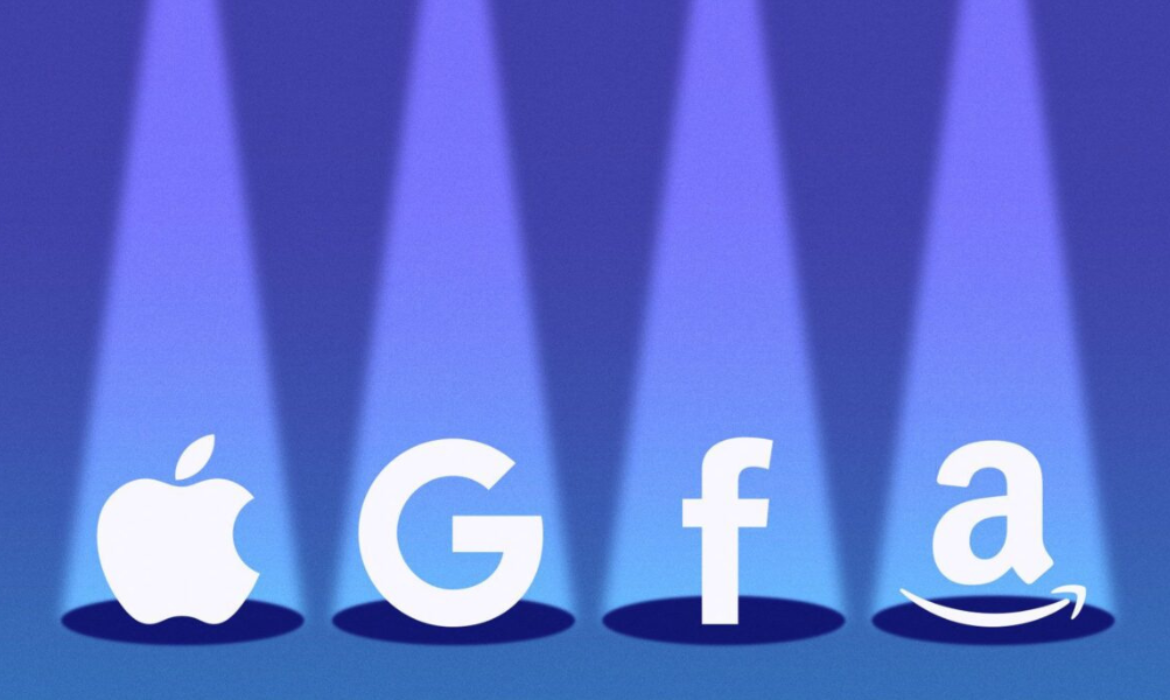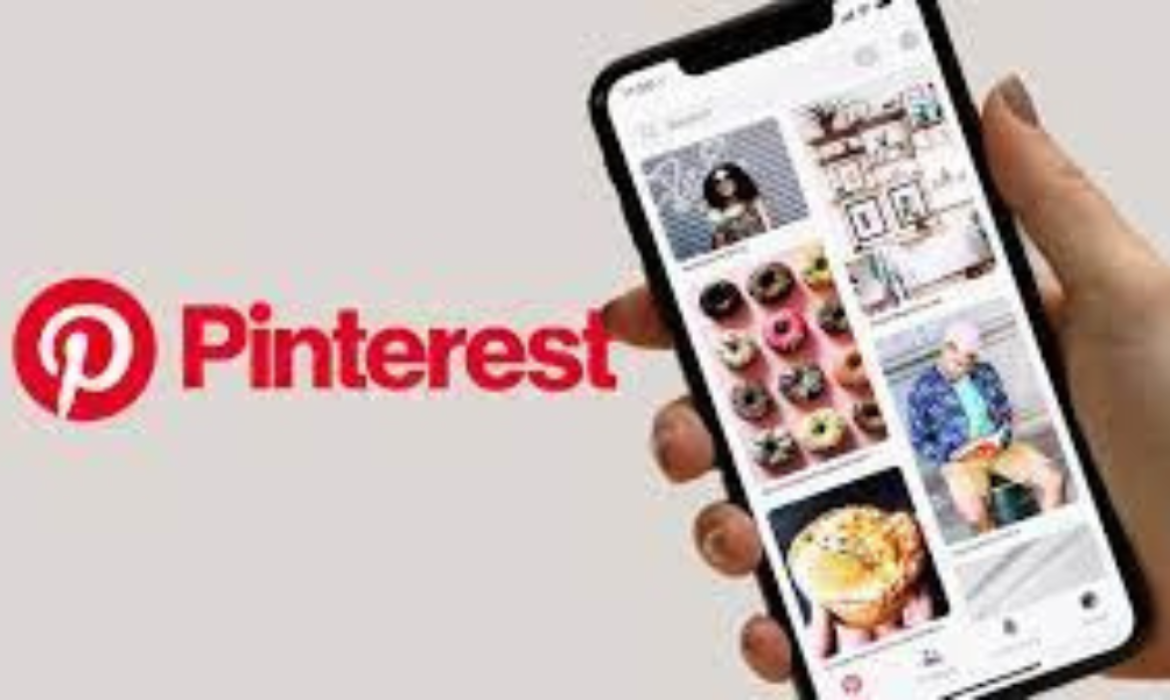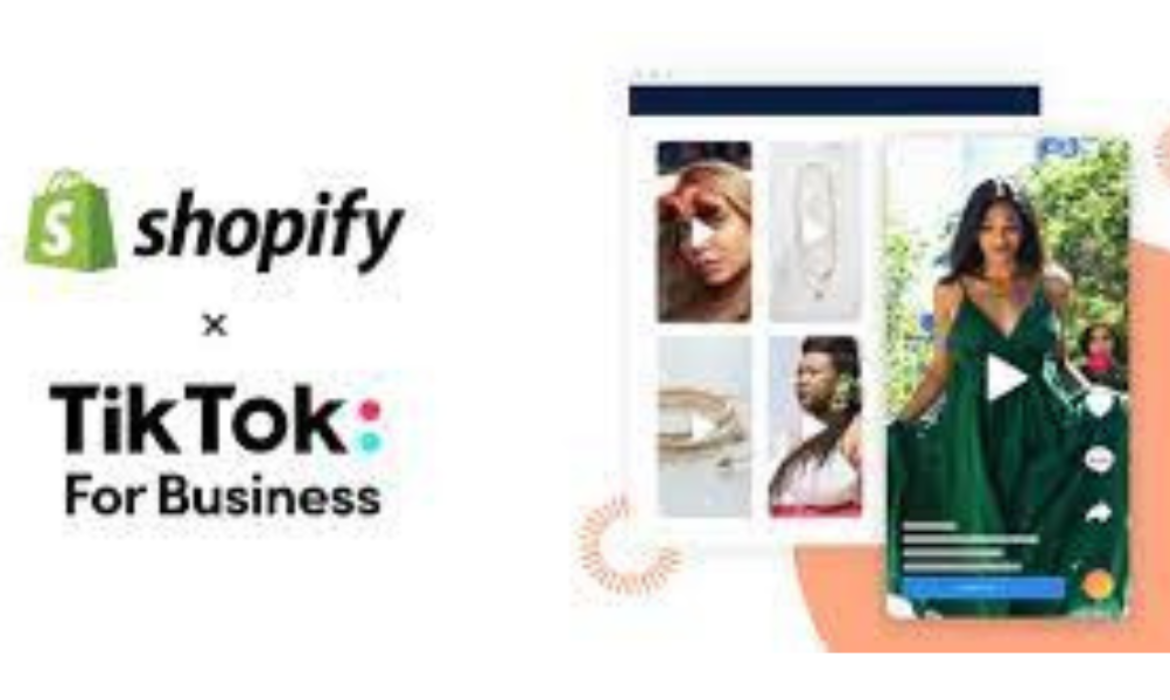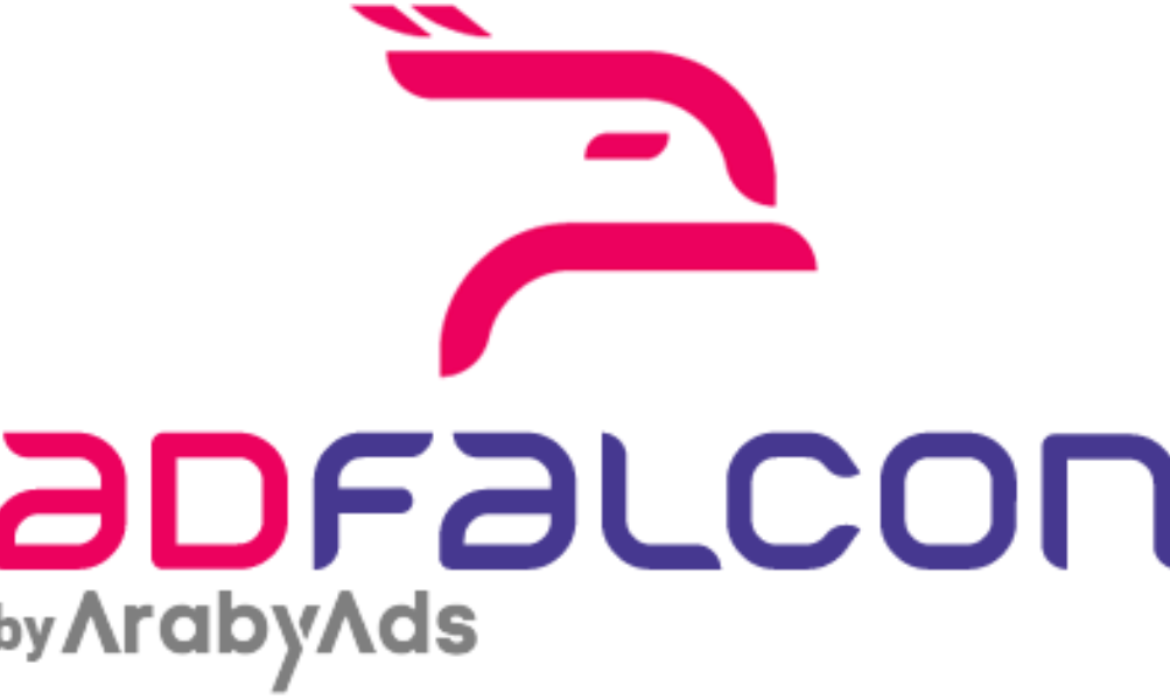All About “Baaz”- World’s First Exclusive Arabic Social Media Platform.
The beta version of the first Arabic social media platform “Baaz” was launched. The platform created in the Arab world for the Arab world targets the audiences in the Middle East and North Africa (MENA) region and is characterized by providing features that are culturally relevant to the Arab user as well as enjoyable at the same time.
The Salient Features Of Baaz
Baaz has various features but the most prominent is augmented reality (AR) technologies that allow users to test a set of visual effects in harmony with facial movements. It provides an exclusive series of avatars that embody famous Arab personalities or have Arab features. This is an addition to the ‘Explore section’ of the platform where users can browse famous and interactive photos and videos based on their interests ranging from comedy, video gaming, travel, and more. Baaz CEO Hamda Khochtali said,
At “Baaz”, we will ensure that the designs of our products are simple so that they remain the closest and easiest for users to understand.”
It targets the digital-savvy young generation whose knowledge of the digital world and technology is growing. Baaz is the perfect tool for those looking to connect with the outside world and share their ideas.
Baaz: The Game-Changer For The Arab Audience
Baaz uses the most advanced tools and methods and adopts the latest encryption technology, which complies with the European General Data Protection Regulation (GDPR), and the California Consumer Privacy Act (CCPA). CEO Khochtali emphasized that the social media platform aims to meet the demand of Arabic language users, focus on Arabic content as well as be user safe and friendly.
“Since the beginning of this year, we have worked to adapt to the requirements of the Arab user, and we made sure that the product is based on three basic points, that it is Arabic, safe, and simple, meaning easy to use. Arabic, because we really need an Arabic platform that understands us and our needs, a platform that looks like us.And, Safe because the Arab user is tired with fake accounts and fake news.And to be simple, because a large number of features and effects, does not necessarily mean meeting the aspirations of users.”
In its first of its kind experience, Baaz provides the easiest and fastest process to users that verifies accounts instantly and ensures a safe environment for users. The “verified” account holder has access to all tools and features and can prevent unverified users to comment or interact on their post. On the other hand “unverified” accounts are classified as virtual. They have access to dozens of avatars, filters, and virtual backgrounds as well as can verify accounts anytime.
CEO Khochtali stated that the goal is “not to rival Facebook and Instagram” as there is no Arabic competition.
“We do not have a competitor at the moment in the Arab world. We aim for “Baaz” to be among the three most used platforms in the Middle East and North Africa within the next few years, and to be distinguished by our proximity and deep understanding of the Arab user. We are from you and to you.”
Baaz is currently working with the most prominent digital content creators in the Arab world, especially from Lebanon, Tunisia, Jordan, and Palestine to provide exclusive content on the platform. This will enhance user experience and serve the aspirations of Arab audiences. It also looks forward to gradually expand to other Arab markets and work tightly with more startups, developers, content creators, illustrators, and artists.
JGroup and FoxPush Announces World’s First Arabic Demand Side Platform.
Key Points:
- Fox Push, the latest investment venture of JGroup, together announces the world’s first Arabic demand-side platform(DSP).
- The DSP platform will have Cost Per Action(CPA) and Cost Per Lead(CPL) bidding models.
- It will offer programmatic direct buying solutions to advertisers and media buying agencies.
- The Arabic DSP will enhance the performance of the targeted campaign with the focus on Arabic speaking demographic through the power of mobile, video, and display.
- The Arabic DSP is linked to premium publishers across GCC as well as over 50 prominent SSP’s worldwide.
Recently, JGroup invested USD 15 million in the Dubai-based adtech start-up FoxPush and together announced the launch of the world’s first Arabic performance-based demand-side platform(DSP). This marks their second phase of the partnership that focuses to unlock endless opportunities for advertisers, media buying agencies, and brands while focusing to create a global footprint within the digital industry. Imad Jomaa, Founder and President of JGroup said,
“Digital consumers are swiftly changing the dynamics of advertising across the globe. Advertisers, media buying agencies and brands are expected to interact with digital consumers at every touchpoint to ensure they secure the top of mind brand recall.
With the world’s first Arabic DSP, we enable a brand to achieve this part of the customer journey with ease, especially when they want to focus on the Arabic speaking audience. The launch of the first Arabic DSP in the world is a milestone achievement not only for us but for the whole advertising industry. It helps, supports and motivates all of us to broaden our offerings to the Arabic-speaking demographic and elevate the engagement level of digital advertising.”
The first-ever Arabic DSP in the market includes Cost per Action (CPA) and Cost per Lead (CPL) bidding models to cater to the targeted requirements of advertisers, media buying agencies, and brands worldwide. It has access to premium publishers across GCC and 50+ leading SSP’s worldwide.
DSP is a software solution used by advertisers to purchase videos, display, and mobile ads in an automated fashion. JGroup and FoxPush elevate the DSP performance, especially to capture the mind space of Arabic audiences. Ahmed Elsayed, Co-Founder, and COO at FoxPush elaborated further and said,
“Launching the first Arabic DSP in the world is a moment of pride for us at FoxPush. It is a game-changing solution that is engineered to cater to the Arabic audience and truly focuses on their needs and demands. There are over 420 million Arabic speaking people in the world and our Arabic DSP will enable brands and advertisers to help reach out to this wide demographic through the power of mobile, video and display. The solution has the capabilities to drive the wave of transformation forward within the digital advertising industry.”
Advertisers and media agencies will be able to access the new Arabic DSP in early Jan 2021. Meanwhile, JGroup and FoxPush are open to the idea of creating accounts for selected brands and advertisers.
About JGroup:
JGroup, a Lebanon-based holding company with a presence across the Middle East, Europe, Asia, and the United States. The regional group is established by prominent entrepreneur Imad Jomaa. The regional company’s portfolio comprises 38 subsidiaries operating across several industries that include Digital Media, Advertising, Real Estate, Production House, Production, Technology, Contracting & Development, Pharmaceuticals, Printing, Sports, Distribution, Hospitality, Art, and Investment. To know more, check http://www.jgroup-me.com
About FoxPush:
FoxPush is an emerging Dubai-based Adtech startup founded by co-founders Ahmed Elsayed and Mohammed AlMali. It is well-known in the regional adtech industry for its programmatic advertising platform based on the cost-per-lead buying model. The platform delivers qualified leads to the brands and advertisers and helps businesses to enhance the performance of their websites and targeted digital campaigns. It has a rich source of curated data of the Arabic audience and publishers’ side solutions used by over 50,000 portals worldwide including regional outlets in the MENA region. To know more, check https://www.foxpush.com.
Double Verify Launches Authentic Brand Safety Targeting on Google’s DV360.
Double Verify (“DV”) announced its Authentic Brand Safety targeting solution on Google marketing demand-side platform(DSP), Google Display and Video 360.
The leading software platform for digital media measurement, data, and analytics said Authentic Brand Safety enables consistent activation of brand suitability criteria in a pre-bid setting, helping advertisers reduce block rates and enhance return on their digital investment. Mark Zagorski, CEO of DoubleVerify said,
“With our proprietary Authentic Brand Safety solution, global brands can create a single quality profile that is centrally deployed, managed and optimized – ensuring seamless brand protection, while making execution far more efficient.”
Seamless Protection: The Authentic Brand Safety targeting provides comprehensive brand safety solutions to advertisers. It supports more than 75 avoidance categories and over 44 languages. It addresses brand-specific concerns through exclusion/inclusion lists and customization options.
Superior Performance: Double Verify’s solution ensures the advertiser’s brand safety criteria are applied before media is purchased. This will allow advertisers to allocate their spend towards qualified impressions only and protect them in an environment where blocking is not supported like for example, VAST Video. Ultimately, this alignment will let advertisers optimize for authentic impressions, boost performance, reduce post bid reconciliation, and make good-processes.
Streamlined Operations: Double Verify’s unified service and performance platform, DV Pinnacle core benefit is reducing administrative time and complexity associated with setup, deployment, and maintenance of brand safety controls across an advertiser’s multiple buying platforms and campaigns. It also enables advertisers to create a single profile that drives automatic, consistent updates to both pre-bid targeting and post-bid measurement criteria across DSPs.
In addition to Display & Video 360, DoubleVerify’s Authentic Brand Safety is available on DSPs and buying platforms such as Adelphic, Adobe, Amobee, Basis by Centro, Beeswax, MediaMath, The Trade Desk, Verizon Media and Xandr. Mark Zagorski, CEO of DoubleVerify also said in a statement,
“At a time when it has never been more important for brands to align their values with their advertising buys, we are excited to bring the power of Authentic Brand Safety to Display & Video 360.”
Read More: Programmatic Advertising Platforms in 2020: A Complete Guide
Tech Giants ‘Amazon,Google, Apple, Facebook’ Beats Q3 Estimates
Key Points:
- Big Tech Quartet- Apple, Alphabet, Amazon, and Facebook reported their third-quarter earnings en masse last week.
- The tech giants exceeded Wall Street estimates maintaining the momentum from the previous quarter shows how the pandemic has driven online business.
- Their earnings soar despite antitrust issues and seemingly endless coronavirus pandemic.
- Google and Amazon enjoyed a strong third quarter whereas Facebook and Apple just managed to beat the estimates.
- The combined profit of the tech giants totaled $38.08 billion compared to $29 billion last quarter.
The Big Tech giants are just getting bigger amidst a global pandemic, economic malaise, and anti-trust scrutiny. Alphabet, Apple, Amazon, and Facebook collectively exceeded Wall Street expectations reporting a combined quarterly net profit of $38.08 billion. The tech companies are under unprecedented scrutiny from US lawmakers on their dominant positions in the marketplace. The four companies’ combined worth is about $5.3 trillion.
Apart from the growing profit and revenue, the stocks of three of the companies had mixed performance after trading hours as the forecast issues didn’t go well with the investors: Facebook’s edgy outlook, Apple’s no forecast, and Amazon’s huge Covid-19 spending projections. Google crushed market expectations but didn’t provide forecasts after tremendous gains.
Here’s A Quick Glance At The Tech Giants’ Earnings:
1. The Next Big Thing For Apple Is iPhone 12

Apple narrowly exceeded market expectations despite the later-than-usual launch of its iPhones. The net sales grew by 1% Y-o-Y in its fiscal fourth quarter. The increase mainly reflected strong growth in Mac- up by 29% and iPad – up by 46% as millions of people were remote working and schooling during the pandemic.
Apple is the bellwether for the smartphone business but iPhone sales slumped 21% as the tech giant delayed the launch of iPhone 12 from late September to October which means the result of the new iPhone will be seen in the company’s January report. Apple also witnessed a 28% decline in revenue in China because of the lack of a new iPhone launch. This resulted in a 7% drop in net income to below $13 billion. The company also did not offer revenue guidance for the current quarter that disappointed the investors. However, CEO Tim Cook tried to paint a positive picture in a statement,
“Despite the ongoing impacts of COVID-19, Apple is in the midst of our most prolific product introduction period ever, and the early response to all our new products, led by our first 5G-enabled iPhone lineup, has been tremendously positive.”
Key Numbers (Analyst estimates are based on Bloomberg Consensus data)
- Revenue: $64.7 billion compared to $63.48 billion expected.
- iPhone Revenue: $26.4 billion compared to $27.06 billion expected. The Q4 2019 iPhone revenue was $33.36 billion.
- Services revenue: $14.5 billion compared to $13.87 billion expected.
- Wearables revenue: $7.8 billion compared to $7.35 billion
2. Alphabet Sales Surges On Resurgence Of Ad Sales

Google’s parent company Alphabet topped Wall Street expectations revealing a mammoth 14% revenue jump. The growth is led by Google’s search business, an increase in advertising spend on Google and Youtube as well as continued strength in Google Cloud and Play. The company will be more transparent about its Google Cloud business and break out the operating income beginning next quarter. This will give an insight into its profitability of online advertising operations, which accounts for the lion’s share of Google’s revenue.
CEO Sundar Pichai described Q3 as “a strong quarter, consistent with the broader online environment.”
“It’s also a testament to the deep investments we’ve made in AI and other technologies, to deliver services that people turn to for help, in moments big and small.”
He also addressed the antitrust suit by the Justice Department and said,
“We believe that our products are creating significant consumer benefits, and we’ll confidently make our case.”
Key Numbers (Analyst estimates are based on Bloomberg Consensus data)
- Revenue: $38.01 billion (minus traffic acquisition cost) compared to $35.3 billion expected.
- Google Cloud revenue: $3.44 billion compared to $3.31 billion expected.
- YouTube Ad Revenue: $5.04 billion compared to $4.52 billion expected
3. The Most Profitable Year For Amazon

The pandemic boosted online shopping that pushed Amazon to a record for sales and profit this quarter. It blew past Wall Street expectation as the sales grew 37% and net profit roughly tripled to $6.33 billion. The lucrative Amazon Web Services sales up by 29% Y-o-Y as the company continue their shift to cloud computing.
Amid the pandemic surge, Amazon has already surpassed 2019 annual profit of $11.59 billion ahead of the fourth quarter with the holiday yet to come. CEO Jeff Bezos said,
“We’re seeing more customers than ever shopping early for than ever shopping early for their holiday gifts, which is just one of the signs that this is going to be an unprecedented holiday season.”
The eCommerce giant expanded its fulfillment infrastructure by 50 percent and pushed its workforce to more than 1 million mark this year. Amazon saw higher Prime membership renewals and Prime member growth rate and streaming Prime video content rose more than 80% annually in Q3. The online grocery sales growth also accelerated in Q3 with no delivery charges for Prime members. Other revenue which is mostly ad-related is up 49% from the same period last year to $5.4 billion.
However, growth has not come without cost. The company has spent billions during the pandemic in areas like social distancing, the addition of new facilities, new hires, cleaning, supplies, and testing. It expects the cost to rise to $4 billion next quarter and it will not recur once the pandemic ends.
Key Numbers (Analyst estimates are based on Bloomberg Consensus data)
- Revenue: $96.1 billion compared to $92.7 billion expected
- Amazon Web Services Revenue: $11.6 billion up from $9 billion a year ago.
4. Undaunted Ad-Revenues And E-commerce Boom For Facebook

Facebook earnings were better than expected despite a torrent of criticism that included a summer boycott by many large advertisers in July. The revenue jumped 22% to $21.47 billion from $17.65 billion a year ago. Facebook witnessed strong revenue and user growth, The revenues grew with new advertisers coming on board in search of new ways to reach customers.
Monthly Active Users is a key barometer to advertisers and the owner of Whatsapp and Instagram reported a whopping 2.74 billion MAU’s, up by 12% Y-o-Y. However, the company reported a rare decline in monthly and daily users in the U.S and Canada, down to 196 million from 198 million in the previous quarter. But the social media giant saw an increase in revenue- per-user for the region. More than 2.54 billion people daily use at least one of Facebook’s family of apps — Instagram, WhatsApp, Messenger, or Facebook — up 15 % Y-o-Y.
The social media platform plans to integrate all its family app messaging services and make it “one connected interoperable system” that will particularly be helpful in the U.S. The tech giant is hoping that the use of interoperability will lead its messaging platforms to interact with businesses. CEO Mark Zuckerberg noting the recently launched Facebook Shops said,
“I think the goal is to build out a commerce platform around messaging.”
“We’re building out a number of tools around business messaging, so that way people can follow up and complete transactions and get support through messaging, and then payments so that people can complete transactions, too.”
It also believes that the Virtual Reality (VR) business is “self-sustaining” as the user base will be huge and economical for developers. They can prepare content for Facebook’s Oculus platform over alternative gaming platforms.
Key Numbers (Analyst estimates are based on Bloomberg Consensus data)
- Revenue: $21.47 billion compared to $19.84 expected.
- Daily active users (DAUs): 1.82 billion compared to 1.78 billion expectation
- Monthly active users (MAUs): 2.74 billion compared to 2.7 billion expectations.
The numbers of tech giants show how resilient these companies are and their services and products are in demand during the pandemic. Even though the investors are wary of the forecast numbers but with record profits and sales in the past three months, these heavyweights are unstoppable.
Go Deeper: Everything the Q2 2020 Financial Results of Tech Giants Have to Say
Pinterest Report BlockBuster Q3 Earnings As Brand Advertising Rebounds
Key Points:
- The image-sharing service platform Pinterest witnessed a rebound in brand advertising after a difficult period owing to the pandemic.
- The company’s blowout Q3 results indicate a revival in advertising demand which is a positive sign for the industry.
- The company said that the spending accelerated from advertisers that boycotted social media like Facebook and Twitter.
- Pinterest posted strong revenue and user growth. The company’s Q3 revenue grew 58% year over year to $443 million.
- On Thursday, shares of Pinterest further soared more than 28 percent setting new records.
With the pandemic, consumer behavior saw a shift towards online. Pinterest reported better-than-expected Q3 earnings that trounced revenue and income estimates and the stock price surged more than 28% on Thursday.
Why It Matters:
As eCommerce rises in this pandemic, Pinterest surpasses Wall Street expectations and continues to add users and boost revenues. Helping boost the earnings is a surge in user base and resurgence in brand advertising.
In the investor letter, the company attributed the surge in growth to Covid-19.
“MAU growth was strong in both the US and international markets driven primarily by COVID lockdowns in many regions.”
By The Numbers:
Revenue: $443 million to $383.5 million expected.

Monthly Active Users (MAUs): 442 million to 436.38 million expected

ARPU: $1.03 to. $0.90 expected

Pinterest Takeaways:
- Pinterest saw an unexpected explosion in users- up 26 million from the previous quarter. This has been especially strong in users under 25 years who are looking for DIY ideas for new home -improvement projects during the lockdown. Pinterest explained,
People who began using Pinterest during COVID-19 continued to have high levels of engagement in Q3. In fact, users in the COVID-19 cohort had higher retention and higher engagement (defined as impressions, closeups and saves) than a cohort of new users during the same period last year.”
- International growth drove the majority of global MAU expansion and the social media platform has been an increasingly relevant shopping site.
- The company said that the release of iOs 14 also fueled user growth as approximately 4 million users used Pinterest for background filters and customization ideas.
- Pinterest saw a resurgence in ad demand from large brand advertisers of consumer goods along with mid and small-sized advertisers seeking conversions.
“We’ve seen a major impact just around brands, CPG advertisers and brand advertisers returning to the platform after a pause in Q2 and the return of retail, especially the larger omni-channel retailers that had paused in Q2.”
- The advertiser who joined during the Facebook boycott continues to use the platform as well as accelerate their spending. Pinterest executives also credited the boycott for their gains. Snap earlier echoed similar views in its Q3 earnings result. However, Pinterest also warned that it is unclear on the sustainability of the trend.
- Deployment of automated ads is working for Pinterest supporting small and mid-size businesses. SMB’s are more active as they look for new advertising avenues for international expansion and online shopping. The Pinterest product offering for automated bidding and measurement has significantly improved.
- Pinterest has also upgraded the features- Stories, Video ad units, shoppable pins that drive engagement, and high conversions.
- The company said it has benefitted from shopping on the platform. In the last six months, the number of users engaging with shopping surfaces has grown 85%. However, shopping on Pinterest is still in the early days and growth in its shopping tools is expected.
Pinterest Q4 Outlook:
The company forecasts its Q4 revenue will grow by 60% Y-o-Y but pointed out two areas of uncertainty. First, the pandemic continues to create a level of uncertainty in user behavior especially as the celebration of the holiday season is approaching. It is difficult to predict how will the shopping behavior change or how people will celebrate in the lockdown.
Second, the challenge is to understand brand spending and to what extent the appeal of Pinterest as brand-safe persists with advertisers even past election. Even though the social media platform benefitted from the July phenomenon but cannot bank on Facebook travail over the long term. CEO Scott Morgenfeld said,
“We continued to benefit from marketers who are prioritizing positivity and brand safety.”
“Advertisers tell us that Pinterest is brand-safe relative to other consumer internet platforms and we benefited from this in Q3, though it’s still not clear how sustainable this trend will be, particularly after the U.S. election is over.”
He further added that the top priority of the company is to focus on making the most inspiring and actionable content, engage users, built shopping inventory, and transform advertising.
Lotame Unveils First Global Cookieless Identity Solution, Panorama ID
The leading global provider of data enrichment solutions, Lotame, announced the launch of Lotame Panorama ID, a new way that will help publishers and marketers to track identity.
The company said in a press statement that Panorama Id is powered by Lotame’s patented graphing technology that helps publishers unify first-party data. The single identity solution connects all types of device identifiers, customer ids, and associated user behaviors as well as privacy choices without dependence on cookies. It is freely accessible to all digital advertising players and enables advertisers to target audiences through header bidding and can cap the frequency with which a user sees the ad. It is available to all who want to use it via API, prebid, and inbound/outbound server-to-server.
For many years, advertisers online have relied on third-party data and cookies to target audiences. However, it is time for a cookieless world with major browsers phasing out the third-party cookies. To adapt to the internet to this new change, Lotame introduced Panorama ID. Andy Monfried, CEO of Lotame said,
“Third-party targeting challenges and mounting privacy regulations have created an identity crisis in digital.”
“Without privacy-friendly and people-based tools, brands and publishers can’t communicate and transact effectively in a cookieless world. If they can’t get identity right, they can’t understand or engage audiences at scale, affecting everything from customer loyalty to sales and revenue to the viability of business tomorrow. “
The Survival Of Fittest
It is essential to find a solution to identify the survival of the digital ecosystem beyond Google, Facebook, and Amazon. IAB’s report suggests that if digital tracking ended without a replacement, “there would be a shift of between $32 billion and $39 billion of advertising from the open web to the walled gardens by 2025.”
Lotame Panorama ID is the only omnichannel and freely accessible identity solution that does not depend on third-party cookies to target consumers globally. With this identity solution, marketers and publishers can:
-Protect consumer privacy: Panorama ID is privacy-friendly and compliant with a variety of regulations including GDPR and CCPA. Users will be able to opt out of Panorama ID across every digital touchpoint and device.
-Increase ad targeting accuracy and scale: Lotame Panorama ID matches attributes across devices and domains to an individual. The company says that on average a single pseudonymous ID will include 119 web and 89 mobile attributes delivering the highest accuracy, profile depth, and scale across the open web.
-Effectively measure campaigns: Lotame Panorama ID enables marketers and publishers to effectively target, measure, and deliver campaign reporting based on unique people than a cookie or mobile ID.
-Work together: Consumers are changing all the time. To reflect this change, it is important that the marketer and publisher relationships evolve along with customers. Lotame Panorama ID provides a common language or bridge to make ad targeting and delivery to analytics impactful for advertisers, publishers, and consumers.
-Increase revenue beyond contextual targeting: Publishers can use Lotame Panorama ID to go beyond the limits of contextual targeting to help marketers reach customers based on their expressed passions, behaviors, and interests across all their devices and publisher domains. This also unlocks new monetization opportunities for publishers as COVID-19 continues to impact revenue.
Andy Monfried further added,
“With our Panorama ID, we’re giving the marketplace equal opportunity to compete, improve consumer relationships, and deliver outstanding, diverse, ad-supported content across the open web and connected devices.”
TikTok To Move Into Social Commerce Game, Partners With Shopify
Highlights:
- TikTok is investing in a social eCommerce platform with an announcement of a global partnership with Shopify.
- The deal will help Shopify’s 1 million merchants to advertise their products to TikTok’s younger audience and drive sales.
- Shopify merchants will be able to sell products in the form of shoppable ads whereas TikTok users can click on an ad to buy the tagged products.
- All transactions will be executed via Shopify’s site.
TikTok announced a global partnership with the Canadian eCommerce platform Shopify to help brands and merchants advertise their products through shoppable videos. Through the new partnership, Shopify’s one million merchants will be able to create and connect their TikTok For Business account and turn their existing imagery into videos for ‘shoppable ads’. Purchases are executed on the Shopify platform and hence the transaction data and customer data remain with the retailer than TikTok.
Despite the White House executive order of the sale unknown, business operations for TikTok are as usual and continue to grow. This integration will help to create new avenues of income for TikTok creators apart from influencer partnerships. TikTok’s partnership with Shopify is a significant step by the video-sharing app to widen its nascent advertising ecosystem.
Run It Using Shopify Dashboard
As per TikTok, through the new TikTok channel, Shopify merchants can access core functions of the TikTok For Business Ads Manager without leaving the Shopify dashboard. Highlights include:

Image Credit: Shopify
- New, “1-click” pixel: Shopify merchants can install or connect their TikTok Pixel with a click of a button, making it quicker and easier to track conversions.
- A One-Stop-Shop for TikTok Campaigns: Merchants can create campaigns, target audiences, and track performance in one place.
- Creative Made Simple: The ad tools enable Shopify merchants to create native, shareable content into in-feed video ads that resonate with the community.
- Free Ad Credit: For enticement, eligible Shopify merchants can claim a $300 ad credit to jumpstart their first TikTok campaign.

Image Credit: Shopify
Expansion Of Other Shopping Features
Blake Chandlee, Vice President, Global Business Solutions at TikTok said,
“As social commerce proliferates, retailers are recognizing that TikTok’s creative and highly engaged community sets it apart from other platforms. We’re constantly exploring new and innovative ways to connect brands with our users, and Shopify is the perfect partner to help us grow and expand our commerce capabilities globally.”
TikTok is planning to test new in-app features that will let users discover Shopify merchants’ products and shop them directly within the app. The new features could be similar to the product tags that TikTok has been testing with some brands.

Image Credit: Social Media Today
The two companies will collaborate to test new commerce features in the coming months. However, no financial details are revealed about the tie-up by the companies.
Satish Kanwar, VP of Product at Shopify said,
“We’re thrilled to be the first partner to welcome TikTok to the world of commerce, particularly right now, as our merchants prepare for a busy online holiday shopping season.”
Will Walmart Be Able To Ink The Deal With TikTok?
Walmart has been interested in investing in TikTok to enhance its advertising strategy and enhance merchant traffic. However, the talks remain shrouded amidst political uncertainty. Even though the possible ban on TikTok is yet to go into effect, the collaboration between TikTok and Shopify might sign that it is not a major threat. For Shopify, the TikTok deal is more lucrative for the U.S markets.
TikTok has been steadily ramping its tools for merchants and brands in recent months. It introduced a self-serve advertising platform to help small businesses broader reach. It also debuted a marketing program with approved providers of advertising service to support brands in creating, executing, measuring, and boosting their ad campaigns. Meanwhile, in August it tested its first shoppable live stream with Ntwrk. TikTok has been trying to grow its revenue opportunities and advertiser base.
If it plays the cards the right way, TikTok can emerge as a powerful e-commerce engine. This is one of the main reasons for Walmart’s keen interest in buying a stake in the video-sharing app. As per Tik Tok, half of the users indicated that they discover new products through advertisements posted by a product or brand in the app. Such a high level of engagement is beneficial for merchants who are looking to reach the millennial generation whose spending power is high.
TikTok reports that the new channel for Shopify is now available in the US. It will become available in Europe and Southeast Asia in early 2021.
ArabyAds Acquires Advertising Platform AdFalcon
ArabyAds, a leading advertising and marketing intelligence platform in the MENA region acquires the advertising and data platform and former technology hub of Noqoush Media Group.
The acquisition is a part of the young mobile media company ArabyAds’ vision to revolutionize the AdTech space in the MENA region. This is a natural progression to take technology to another level.
The acquired technology suite includes AdFalcon’s Demand Manager (DSP), Bridge Technology, and Ad Network. These solutions will include support for various ad formats, flexible targeting options, and various pricing models, and allow clients to reach the targeted audience by way of programmatic buying. ArabyAds intends to adopt these technologies beyond mobile.
As reported by Campaign Middle East, CEO of ArabyAds Mahmoud Fathy said,
Our vision to become the region’s first AdTech platform can only be realized by such strategic strides. We see this opportunity as the first of many to aid us in our endeavour’. He continues, ‘More than anything we are excited to have the brilliant team behind AdFalcon’s technology join our family. We are thrilled to see what we will achieve together
About ArabyAds
ArabyAds is the leading advertising and marketing intelligence platform that offers comprehensive marketing solutions to clients across the MENA region. It is a one-stop-shop advertising intelligence firm that covers the business needs of clients with measurable results to enhance their spending. It is headquartered in Dubai. For more details, visit https://www.arabyads.com.
About Ad Falcon:
AdFalcon is the first mobile advertising network in the Middle East that provides specialized mobile advertising experience to advertisers, publishers, developers, and mobile users across the region. The technology, targeting mechanism, and diversified mobile ads maximize the campaign’s return on investment (ROI) and deliver satisfying results for the brands and businesses. For more details, visit https://www.adfalcon.com
Google Plans To Turn YouTube Into A E-commerce Giant
Google enters the e-commerce space and plans to turn YouTube into the shopping next shopping destination. Google might soon transform its video streaming platform Youtube into a new strong contender for e-commerce like Amazon and Alibaba. On recent call earnings, Google CEO Sundar Pichai said that the ‘unboxing’ videos could be turned into a massive shopping opportunity.
What’s The Plan
A Bloomberg report suggests that the world’s largest video platform has asked creators to use Youtube software to tag and track product features in their clips. The data will then be linked to analytics and shopping tools from parent Google. This means that whenever a user is watching a video and likes a certain product, they can easily buy it with a single click. Currently, the feature is testing with a limited number of video channels. The channel creators will have control over what products are displayed to avoid any unnecessary product placement in their content. As per Bloomberg reports. It is still unclear how Google will generate revenues from the sales but it has started offering subscriptions for the creators and takes a cut of 30% from those payments.
Integration With Shopify
Youtube is also testing the integration with Canadian e-commerce platform Shopify. The prospect of collaboration with the e-commerce giant could have a huge impact on the e-commerce world. It has serious potential to transform the e-commerce industry and experience by integrating the advertising process directly with sales. The time spent between a consumer seeing something that they like and buying it could be possibly reduced to the shortest duration.
The Covid E-commerce Revolution
According to Bloomberg Intelligence, the e-commerce retail market, excluding China, may grow to $2.8 trillion by 2025. Google has really not seen success in the e-commerce space much like Facebook and underdog Pinterest. The tech giant has instead focused on selling ads and sending users to other stores than selling themselves. This pandemic witnessed a boom in e-commerce with people staying at home and buying online. Facebook and Instagram have leveraged its social media platform as hotbeds for online shopping. The sales have soared in the past few months for Amazon and Facebook whereas Google watched from the sidelines. Google has not utilized Youtube optimally and this is a brilliant move to topple Amazon and Alibaba’s dominance. This also gives content creators an opportunity for more earnings. A win-win situation for both!
Read more: Google Agrees To Pay News Publishers $1 Billion For Their Content
IBM Adds Three New Ad Tools To Help Brands Grow Beyond Cookies
IBM announced three new ad tools to add to its growing suite of AI solutions for brands and publishers that don’t rely on cookies and trackers. The new capabilities are designed to allow brands to reach customers while maintaining their privacy.
The tech giant intends to work with industry leaders like Xandr/AT&T, Magnite, Nielsen, MediaMath, LiveRamp, and Beeswax to help accelerate the use of AI in the digital ecosystem. The IBM Watson Advertising suite of solutions leverages AI to help clients make informed, data-based decisions. It would expand the suite by adding a host of new capabilities. This includes ad attribution, video and over-the-top (OTT) creative, and audience prediction.
– Expansion for IBM Watson Advertising Accelerator: IBM is expanding its advertising accelerator that uses AI. It enables marketers to understand which creative content performs best, and now includes video and OTT platforms.
– IBM Watson Advertising Attribution: The company is launching a beta solution in the coming months. It will allow marketers to precisely quantify the efficiency of their advertising spend while understanding performance drivers.
– IBM Watson Advertising Predictive Audiences: This tool will help reach consumers that show similar behaviors.
The new AI-powered advertising products are an alternative to conventional cookies and trackers. Soon, Google will withdraw the support for such identifiers. Bob Lord, SVP, of Cognitive Applications, and Blockchain, IBM said,
While the advertising industry strives to re-emerge strong from the global economic and societal issues we faced this year, it’s also deep in the throes of a major transformation with changes to mobile identity, certain elimination of third-party cookies, compliance and regulatory shifts and increased demand for trust and transparency,
We believe AI will be the ‘backbone’ of the new era as the industry prepares for the next generation of advertising. Our work will be a step forward in our evolution to meet the advertising industry’s upheaval, and we are proud to help the advertising industry advance with the value of AI.
IBM is working towards a new ecosystem to accelerate AI adoption and in advertising that would bring together existing collaborators like Neilson and MediaMath as well as new partners like Xandr/AT&T and Magnite, with whom IBM is negotiating definitive agreements. The companies can help to reinstate trust and transparency in the marketplace with the next generation of IBM advertising technologies.
As quoted in Adweek, MediaMath CEO Joe Zawadzki said,
You think about sort of the conditions that led AI to become prevalent in finance, for example, like what needed to be true—the the idea that markets get big enough, that automation is available enough.
I think you’re seeing the same conditions for AI in advertising, where it’s gone from sort of experimental and on the side to mission critical for people to figure this out.
Read more: A One-stop Guide On All You Ever Need To Know About AdTech In 2020











